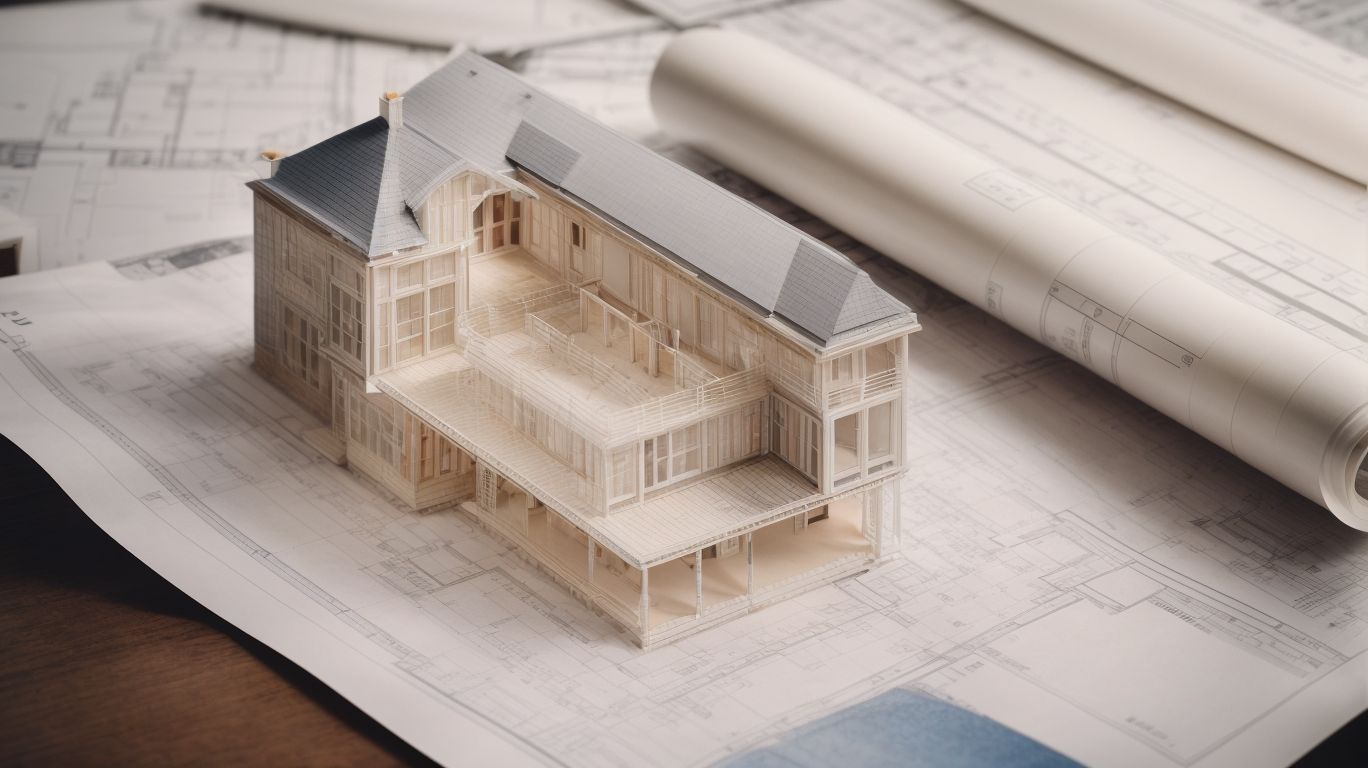
Success Stories: How a Structural Engineer Saved the Day in SF
In the construction industry, the role of a structural engineer is crucial. They are responsible for ensuring structural integrity, meeting tight deadlines, and managing limited budgets.
These professionals face numerous challenges in San Francisco. Through the utilization of advanced technology, collaboration with other professionals, and thinking outside the box, structural engineers have been able to successfully complete projects, receive positive feedback, and improve the safety and functionality of structures.
This article will delve into the importance of structural engineers in the construction industry and the lessons learned from their success stories.
The Role of a Structural Engineer in the Construction Industry
A structural engineer plays a pivotal role in the construction industry, contributing expertise and innovation to ensure the resilience and integrity of building designs.
Their keen understanding of materials, load-bearing capacities, and dynamic forces enables them to design buildings, bridges, and other structures that can withstand diverse environmental conditions and potential stressors.
Their work significantly impacts public safety, as their designs must adhere to strict codes and standards to protect occupants and passersby. Structural engineers often collaborate closely with architects, contractors, and developers to integrate advanced technologies into their projects, promoting sustainable and cost-effective solutions that contribute to the betterment of communities.
What is a Structural Engineer?
A structural engineer is a professional specializing in the field of engineering, particularly in the domain of building and infrastructure development. They leverage expertise and continuous professional development to contribute to urban development.
Structural engineers are responsible for designing, evaluating, and ensuring the safety and durability of structures. These structures can range from bridges and skyscrapers to stadiums. Their technical expertise in analyzing physical forces and materials allows them to create innovative and efficient designs.
By integrating principles of mathematics, physics, and material science, structural engineers are able to address complex challenges. They are constantly seeking advancements in construction techniques and sustainable solutions for urban infrastructure. Their contributions are vital in shaping urban landscapes and promoting economic growth.
What are the Responsibilities of a Structural Engineer?
The responsibilities of a structural engineer encompass project management, technical expertise, and continuous professional development to ensure the successful execution of building and infrastructure projects.
Structural engineers are responsible for overseeing the design and construction of various structures, ensuring they meet safety and performance standards and adhere to engineering principles. This involves analyzing project requirements, developing detailed plans, and collaborating with architects, contractors, and other professionals to deliver efficient and innovative solutions.
They also stay updated on industry advancements, continuously learning to incorporate cutting-edge technologies and sustainable practices into their projects. This demonstrates their commitment to professional growth and adaptability in a constantly evolving field.
The Challenges Faced by the Structural Engineer in SF
Structural engineers in San Francisco encounter a myriad of challenges in real-life situations, including addressing structural failures and developing adaptive strategies to overcome complex engineering obstacles.
Structural engineers in the Bay Area face unique challenges due to the region’s geological conditions, including seismic activity and liquefaction risks. This requires them to use innovative approaches to ensure the structural integrity of buildings and infrastructure.
In order to enhance resilience against natural disasters, these professionals employ cutting-edge materials and technologies. As the city’s skyline continues to evolve and sustainable urban development becomes increasingly important, structural engineers must also prioritize environmentally friendly and economically feasible solutions to meet the demands of a dynamic and growing metropolis.
Meeting Tight Deadlines
Meeting tight deadlines in the dynamic environment of San Francisco poses a significant challenge for structural engineers. It requires exceptional project management skills and resilience to overcome adversity.
The intricate nature of projects in the city demands meticulous planning, efficient resource allocation, and effective communication among team members. Project managers must constantly adapt their strategies to swiftly respond to unforeseen obstacles and changes in requirements.
Leveraging cutting-edge technology and innovative construction methodologies becomes imperative to streamline processes and meet the stringent timelines without compromising on quality and safety standards.
Dealing with Limited Budgets
Dealing with limited budgets in the context of San Francisco’s construction landscape demands resourcefulness, professionalism, and innovative engineering solutions from structural engineers.
This challenge prompts engineers to think creatively and strategically to optimize resources and minimize costs without compromising quality and safety standards. Professionals are required to conduct thorough cost-benefit analyses, prioritize essential expenditures, and explore alternative materials and construction methods to achieve economical yet efficient designs.
By incorporating sustainable and durable solutions, engineers can mitigate long-term maintenance expenses and enhance the overall sustainability of the project, showcasing their commitment to responsible and cost-effective engineering practices in a budget-constrained environment.
Ensuring Structural Integrity
Ensuring structural integrity in the dynamic environment of San Francisco demands critical thinking, problem-solving skills, and a commitment to engineering excellence from structural engineers.
Structural engineers play a crucial role in adapting buildings to withstand seismic activity and addressing the unique challenges posed by the city’s hilly terrain.
They meticulously evaluate the existing infrastructure, innovate new construction techniques, and employ advanced technologies to ensure the safety and stability of high-rise buildings, bridges, and other structures.
Their ability to collaborate with architects, contractors, and local authorities is instrumental in delivering enduring solutions that uphold the city’s architectural heritage while meeting contemporary safety standards.
The Solutions Implemented by the Structural Engineer
Structural engineers implement adaptive strategies and innovative engineering solutions, demonstrating crisis management skills, decisive decision-making, and analytical thinking to address complex challenges in construction projects.
Structural engineers possess the skills to analyze structural designs, anticipate potential issues, and develop preemptive measures to prevent crises. They conduct thorough risk assessments and utilize advanced technologies to identify weaknesses in advance. In the event of unexpected obstacles, they are able to quickly adapt and devise alternative solutions, often working with multidisciplinary teams to leverage a diverse range of expertise. By incorporating these proactive measures into their work, structural engineers play a crucial role in preempting and managing potential crises in construction projects.
Utilizing Advanced Technology
The integration of advanced technology plays a pivotal role in the engineering solutions developed by structural engineers, showcasing innovation and continuous professional development within the industry.
This utilization of advanced technology empowers structural engineers to create more efficient and sustainable designs. Incorporating cutting-edge software for simulations, modeling, and analysis has revolutionized the field, streamlining processes and enabling engineers to tackle complex challenges with precision and accuracy.
These technological advancements have also facilitated collaboration and communication within multidisciplinary teams. This has resulted in comprehensive, integrated solutions that meet the evolving demands of modern infrastructure projects.
Collaborating with Other Professionals
Collaborating with other professionals is a fundamental aspect of the approach adopted by structural engineers, showcasing their teamwork, leadership, and professionalism in multidisciplinary project environments.
Structural engineers collaborate with architects, builders, and other specialists to seamlessly integrate structural elements into the overall design. They showcase their leadership skills by coordinating diverse teams and managing complex project timelines.
Professional conduct is a top priority for structural engineers, and they prioritize effective communication and collaboration to achieve optimal project outcomes. Whether it’s a towering skyscraper or a sustainable bridge, they demonstrate adaptability and versatility in navigating diverse project settings while upholding their commitment to collaborative excellence.
Thinking Outside the Box
Structural engineers demonstrate a propensity for thinking outside the box, embracing innovation, adaptive strategies, and resilient problem-solving approaches to overcome complex engineering challenges.
At our company, we are always pushing the boundaries of traditional practices. We use cutting-edge technologies to optimize designs and enhance structural integrity.
Our commitment to engineering excellence is evident in our ability to anticipate and address potential weak points. We implement creative and forward-thinking solutions to ensure the highest level of safety and resilience in our projects.
By staying up-to-date with the latest industry trends and developments, we go above and beyond to exceed safety standards and contribute to the overall resilience of the built environment.
The Outcome and Impact of the Structural Engineer’s Work
The work of structural engineers culminates in the successful completion of projects, garnering positive feedback, contributing to community impact, and showcasing remarkable achievements through client testimonials and success stories.
Their meticulous planning and implementation ensure that buildings and infrastructure stand the test of time, providing safety and functionality to those who use them.
Through innovative solutions and cutting-edge technologies, structural engineers leave a lasting imprint on the urban landscape, enriching the lives of residents and creating sustainable environments for future generations.
Their dedication and expertise lead to transformative outcomes, earning the trust and admiration of clients and communities alike.
Successful Completion of the Project
The successful completion of projects stands as a testament to the achievements and triumphs of structural engineers, contributing to public safety and urban development through their professional endeavors.
Their dedication to precision in design and construction ensures the structural integrity of buildings, bridges, and infrastructures, safeguarding lives and property.
Their innovative solutions and expert oversight result in the development of resilient and sustainable urban landscapes, enhancing the quality of life for communities.
The meticulous attention to detail and adherence to safety standards are vital elements that underscore the profound impact of their work on the built environment.
Positive Feedback from Clients and Peers
Receiving positive feedback from clients and peers serves as a testament to the professionalism, engineering excellence, and resilience demonstrated by structural engineers in their pursuit of project excellence.
At our company, we are dedicated to providing exceptional project outcomes. Our expertise ensures structural integrity and safety, reinforcing our commitment to our clients. Through client testimonials and professional recognition, we showcase the positive impact of feedback in building confidence and trust in our capabilities as structural engineers.
This recognition not only motivates us to continuously strive for excellence but also strengthens our reputation within the industry. It fosters a culture of continuous improvement and innovation, solidifying our position as leaders in the field.
Improved Safety and Functionality of the Structure
The work of structural engineers contributes to the improved safety and functionality of structures, positively impacting the community and enhancing public safety through innovative engineering solutions.
The expertise of structural engineers enables them to utilize advanced design techniques in the development and implementation of buildings, bridges, and other structures. These techniques ensure that these structures can withstand a range of environmental and human-induced stresses.
Through constant evaluation and improvement of existing designs, structural engineers play a crucial role in preventing potential hazards and promoting the long-term safety and stability of infrastructure. This dedication to public safety not only protects lives but also contributes to the creation of sustainable and resilient communities.
The Importance of Structural Engineers in the Construction Industry
The role of structural engineers holds immense importance in the construction industry, driven by their commitment to engineering excellence, community impact, urban development, and public safety.
The expertise of structural engineers is crucial in the design and construction of buildings and infrastructure. They ensure that these structures can withstand different loads and environmental factors, making them safe for occupants and sustainable for the surrounding environment.
Aside from safety, structural engineers also contribute to the aesthetic and functional aspects of urban landscapes. Their innovative solutions enhance the quality of life for communities. By combining their knowledge of materials, mechanics, and codes, they shape resilient and enduring structures that serve as testaments to their dedication and proficiency.




No Comments